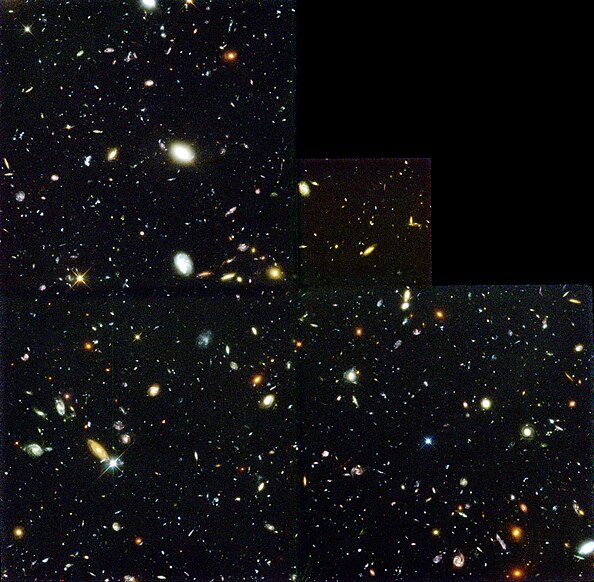| Author: | Stefano |
|---|---|
| category: | Astronomy |
On a dark, clear night, if you walk far away from the city lights, you will be probably able to see a magnificent strike of light we call "the milky way", our galaxy. It looks like this:
Our sun is a small, insignificant star, sitting on one of the arms of this magnificent spiral of stars and gas clouds. Any star you can see clearly with your naked eye belongs to the Milky Way, and it's generally very close to us: hundreds or thousands of light years, small amounts when compared with the 26.000 light years that separates us from the galactic center.
Between October 2007 and August 2009, Alex Mellinger traveled around the globe taking incredible high resolution pictures of the Milky Way. Chunk by chunk, he produced one of the most stunning visual representations of our galaxy. The image can be zoomed, panned, explored. Play with it, I'll wait right here.
Our galaxy is definitely not alone in the dark void of the universe. On the bottom right of the image you can enjoy the vision two nearby companions, the Large Magellan Cloud and the Small Magellan Cloud. They are smaller, irregular, and quite close to us. People living in the southern hemisphere enjoy these two objects of the night sky.
If you shift your attention to the left of the picture, you will probably notice a small diagonal bit of yellow light, just a little below the Milky Way. Zoom in, it's a good friend the Andromeda galaxy:
The Andromeda galaxy can be seen with the naked eye on a clear night. It's quite far: 2.2 millions light years, but still pretty close. Its shape is close to the Milky Way's one. Being so far, the photons we see today left the galaxy 2.2 millions year ago, and traveled since then to finally reach our eyes. This means that what we see right now it is the Andromeda galaxy as it was 2.2 millions years ago. Those photons left those stars when humanity was just leaving the trees.
There are other galaxies around in the sky. Each one is full of stars, each star probably full of planets. Each one far from us, the farther they are, the more back in time we look. We developed powerful telescopes in the last decades. One of them is probably the most well known, and the one that returned the most humbling and amazing images: the Hubble Space Telescope. Far high above the turbulent atmosphere, the HST has the best view of the sky we can ask for. So one day we point it at a patch of sky no larger than a pin, and slowly accumulate the photons hitting the detector. One photon after another, an image is formed. It is the Hubble Deep Field.
Every bit of light in this image is a galaxy. A full galaxy, full of stars. And they are far. The more far we look, the more we approach the time of the Big Bang. So we continued looking, deeper and deeper. The Hubble Deep Field South, the Ultra Deep Field. More galaxies. Everywhere we point our telescope, in bits of sky no larger than pin tips, we find galaxies, more galaxies, again galaxies. Galaxies everywhere, with stars, some of them with planets for sure.
We pushed even more. This image has been taken a few days ago, again from Hubble
This image contains galaxies whose light left for its quest of reaching us 13 billion years ago. Yes, some of these galaxies were there after just 600 million years after the Big Bang, dated by WMAP measurements 13.7 billion years ago. They are the oldest galaxies ever seen.
This is just the beginning. We continue taking pictures of other parts of the sky. More galaxies. Very soon we are sending up a new space telescope, the James Webb telescope. We want to see more, we want to peek back in time and approach those crucial moments where everything we know began. We explore it from the immense big of the sky, and from the immense small of the Large Hadron Collider. From our tiny, insignificant water-covered rocky planet, we need to understand, we need to see, and we need to find the truth. And it will happen in our lifetime.



